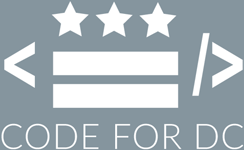At-Risk Funds
Comparing the additional funding DCPS schools received to the number of students eligible for those funds.
What is this? | Sources and Notes
This is an archived project looking at data from the 2014–15 fiscal year. For information on the DCPS budget for fiscal year 15–16, please check out this newer project.
School Name
at-risk students (% of total enrollment)
at-risk funding ( per student)
School Name
Enrollment
total enrollment
at-risk students
At-Risk Funding
(vs. by funding formula)
per student
Line Items
What Are At-Risk Funds?
In 2014, the formula that determines the funding of every DC school was examined and adjusted to better reflect what students need. Many student categories saw increases, and an entirely new category was created to direct additional funds to DC students considered "at-risk" of academic failure.
Over 30,000 students in DC Public Schools (DCPS) and public charter schools are considered at-risk. As of the 2014-15 school year, the school funding formula provides $2,079 additional local dollars per student to help meet their needs.
How Funds Are Distributed
This new funding represents a tremendous opportunity for our schools, but it also raises questions about how these dollars should be spent and how DC can tie these resources to effective programs.
According to DC law, at-risk funds are supposed to follow the student to his or her school, with school leaders determining how best to use these additional resources. But due to time constraints in the budgeting process, DCPS argued that this approach was not possible in the first year of at-risk funding, and it instead used the funds in service of existing priorities, including improving middle schools, increasing student satisfaction, and extending the school day.
Why This Tool
As the budgeting process for the next school year begins, Code for DC and the DC Fiscal Policy Institute created this interactive graphic to show how at-risk funds were distributed by DCPS relative to the number of students considered at-risk in each school. Controls above the chart will filter the schools shown by ward or type. Selecting a school will reveal detailed information including the budget line items that the funding supported.
In order to realize their potential as a tool for addressing achievement gaps, we must ensure that at-risk funds are invested in programs that bolster students and schools with the greatest need.
Sources and Notes
At-risk funding spent by school, FY15: DC Public Schools. Updated May 1, 2014. Retrieved January 25, 2015.
Projected enrollment by school, FY15: Deputy Mayor for Education. Updated April 4, 2014.
Additional school information: Office of the State Superintendent of Education. Retrieved January 25, 2015.
The following schools received at-risk funds but do not have an at-risk eligible student population and are thus not shown: Ballou STAY ($305,900), CHOICE Academy ($10,000), Incarcerated Youth Program ($26,200), Luke Moore Alternative HS ($291,200), Roosevelt STAY ($322,900), Washington Met HS ($179,500), and Youth Services Center ($10,000).
Email or tweet at Chris with questions or comments.
Download and remix our data. Fork us on Github.
Published February 5, 2015 as a public domain work under the CC0 License.

